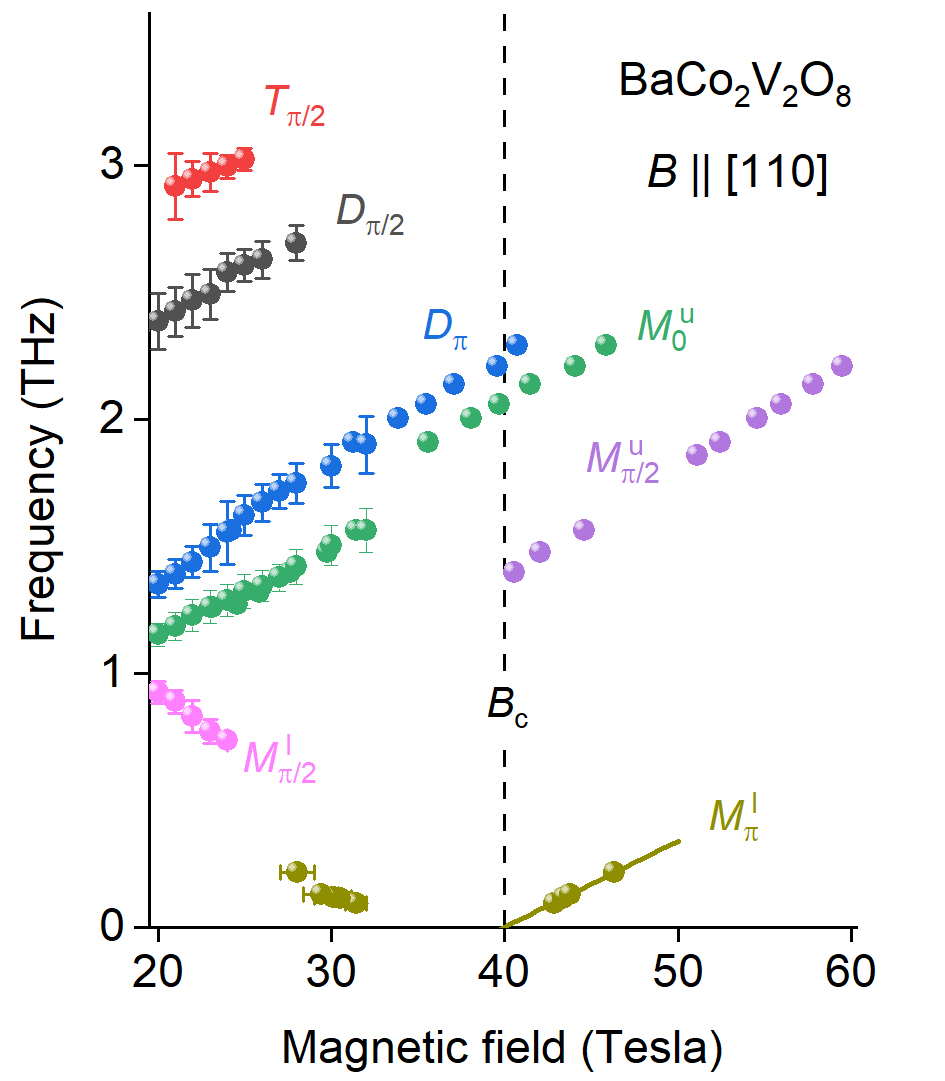Sergei Zvyagin, HLD.
The importance of attractive forces, stabilizing multi-particle bound states in condensed matter is generally accepted. By contrast, multiparticle bound states stabilized by means of repulsive forces were long thought to be only theoretical constructions, due to the strong dissipative channels present in real materials.
Recently, Zhe Wang from the Department of Physics at Technical University (TU) Dortmund, in collaboration with researchers from Augsburg, Bonn, Cologne, Dresden, Geneva, and Prince Georgex(Canada), proved experimentally the existence of repulsively bound magnons in the Ising-like spin-chain antiferromagnet BaCo2V2O8. To demonstrate this, the team employed high-magnetic-field terahertzspectroscopy techniques. They performed measurements in static magnetic fields up to 32 T using a Fourier-transform far-infrared spectrometer at the High Field Magnet Laboratory (HFML) in Nijmegen. The team also went to the Helmholtz-Zentrum DresdenRossendorf and did electron-spin-resonance experiments in pulsed magnetic fields up to 61 T at the Dresden High Magnetic Field Laboratory (HLD), employing an ELBE free electron laser as a tunable source of terahertz radiation.
The figure shows a peculiar frequency-field diagram of the observed magnetic excitations in BaCo2V2O8. The experiments evidenced the presence of several modes, including ordinary single-magnon excitations (modes Mπ/21, Mπ/2u, Mπ1, and M0u), as well as repulsively bound two magnon (mode Dπ, Dπ/2) and repulsively bound threemagnon (Tπ/2) excitations. By comparing these results of their terahertz-spectroscopy measurements to theoretical predictions for a Heisenberg–Ising (also known as XXZ) chain antiferromagnet the researchers can explain the occurrence of the multi-particle modes by repulsively bound magnon excitations. The experimental results show that these high-energy states, well separated from continua, exhibit notable dynamical responses and, despite dissipation, are sufficiently long lived to allow for an experimental observation.

Figure: Frequency-field diagram of magnetic excitations in BaCo2V2O8 in transverse magnetic fields. The experiment reveals the presence of single-magnon excitations (modes Mπ/21, Mπ/2u, Mπ1, and M0u), as well as repulsively bound two- and three-magnon excitations (modes Dπ, Dπ/2, and Tπ/2, respectively).
Experimental observation of repulsively bound magnons, Z. Wang, C.-M. Halati, J.-S. Bernier, A. Ponomaryov, D. I. Gorbunov, S. Niesen, O. Breunig, J. M. Klopf, S. Zvyagin, T. Lorenz, A. Loidl, and C. Kollath, Nature 631, 760 (2024).
https://www.nature.com/articles/s41586-024-07599-3
Contact: s.zvyagin@hzdr.de






